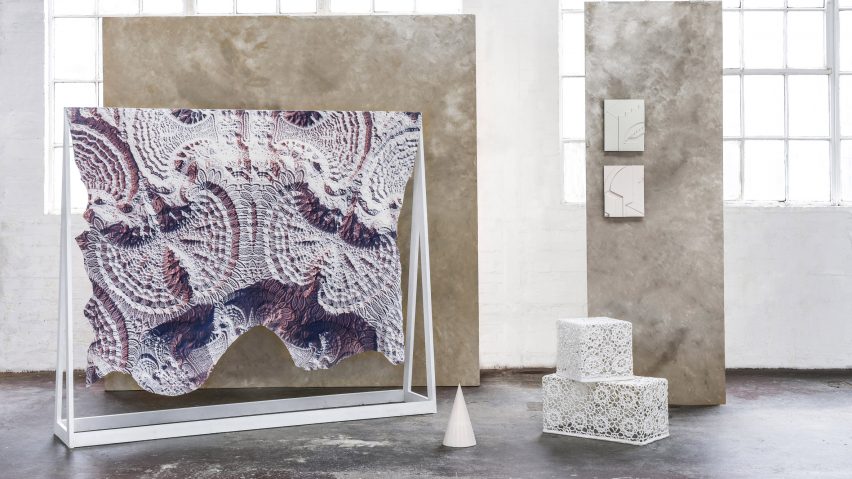
Marcel Wanders creates digitally printed leather hides for Bill Amberg
Dutch designer Marcel Wanders has collaborated with specialist leather studio Bill Amberg to design hides digitally printed with close-up fractal patterns based on sacred geometry.
Wanders has created two variations of the leather hide based on computer-generated fractals, which are infinitely complex never-ending patterns.
The designs were launched at this year's London Design Festival alongside digitally printed hides by five other creatives, including artist Matthew Day Jackson and jeweller Solange Azagury-Partridge.
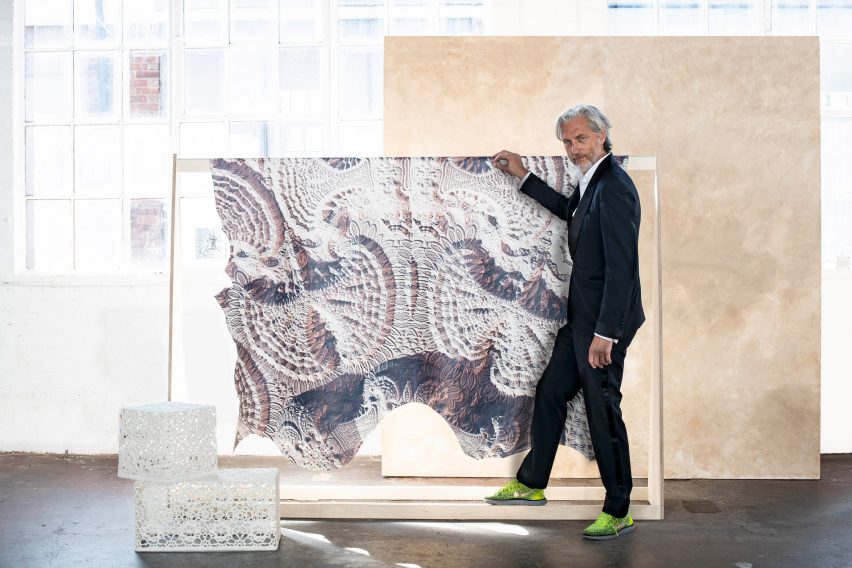
The Dutch designer's hides are a "contemporary version of the language" found in the middle eastern principle of sacred or divine geometry. They form part of his five-year Studies for a Mosque (SFM) series which he hopes will culminate in designing a mosque.
Sacred geometry is founded on the belief that there are mathematical principles at work in nature, and an inherent significance and order within these forms.
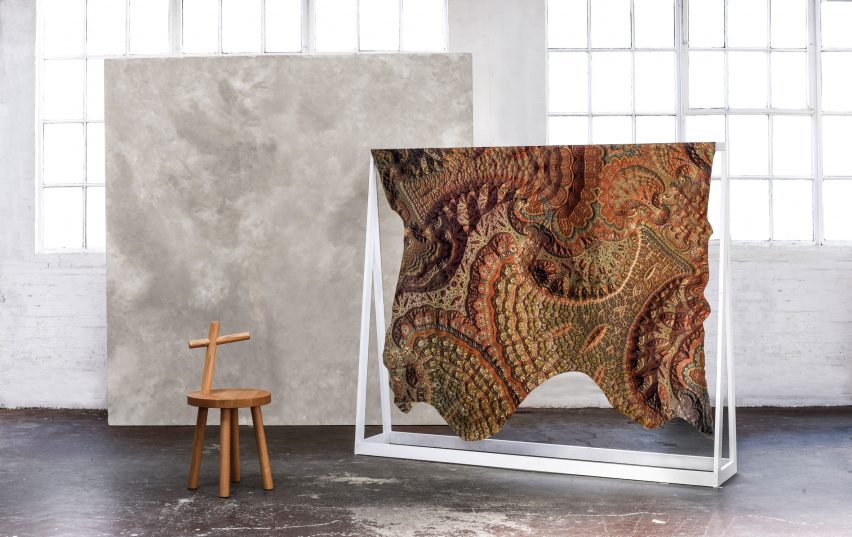
"We work a lot in the Middle East, so you don't want to put your typical European stuff everywhere. When things are authentically correct, they look right in a place," explained Wanders.
"[In the Middle East] they don't do drawings of people, they don't do flowers, instead they have what they call the divine geometries," the designer continued.
"This idea is very eternal, and very deep so it kind of made sense to me to put it on leather."
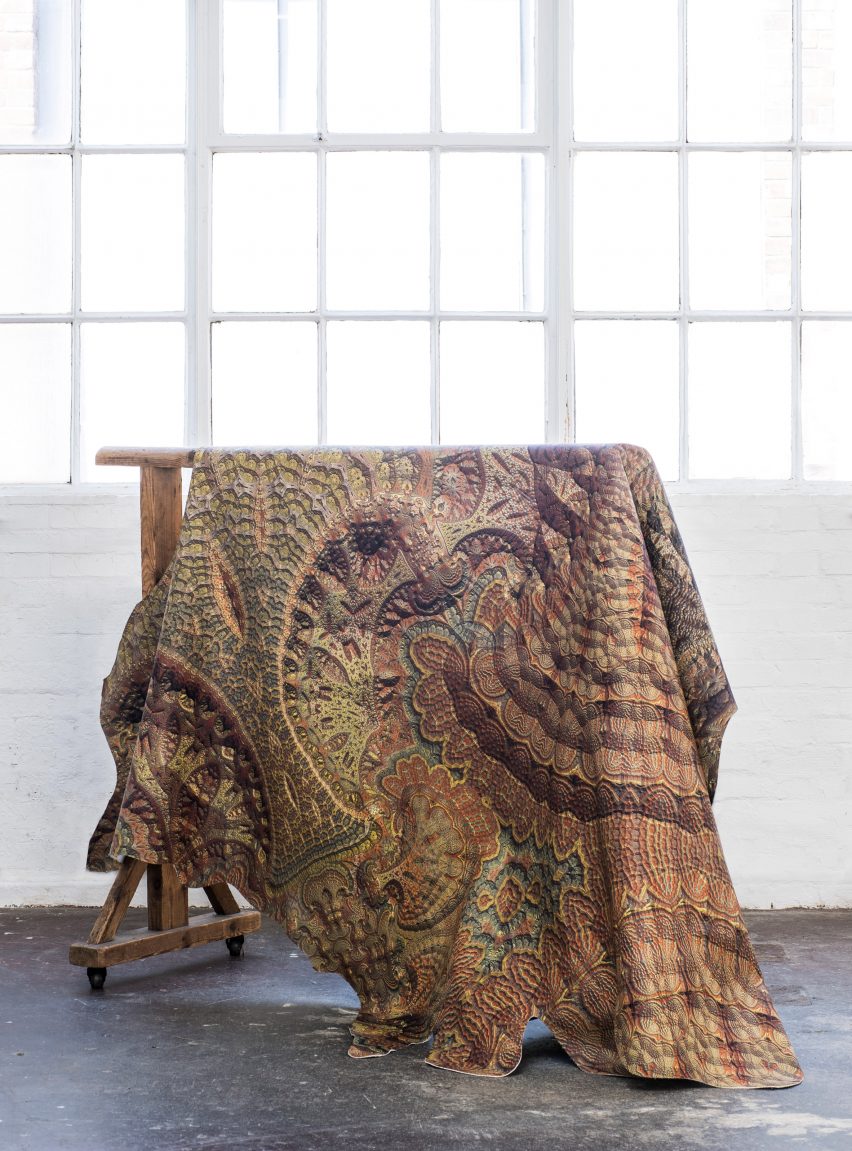
The design on Wanders' hides adds a three-dimensional quality to the leather. The designer describes the fractal patterns as being like "microbes" or "landscapes", and even "a map of the world".
The fractals are created using computer code, and realised at very high resolutions. Small changes to the code affect the finished design, creating patterns at different scales.
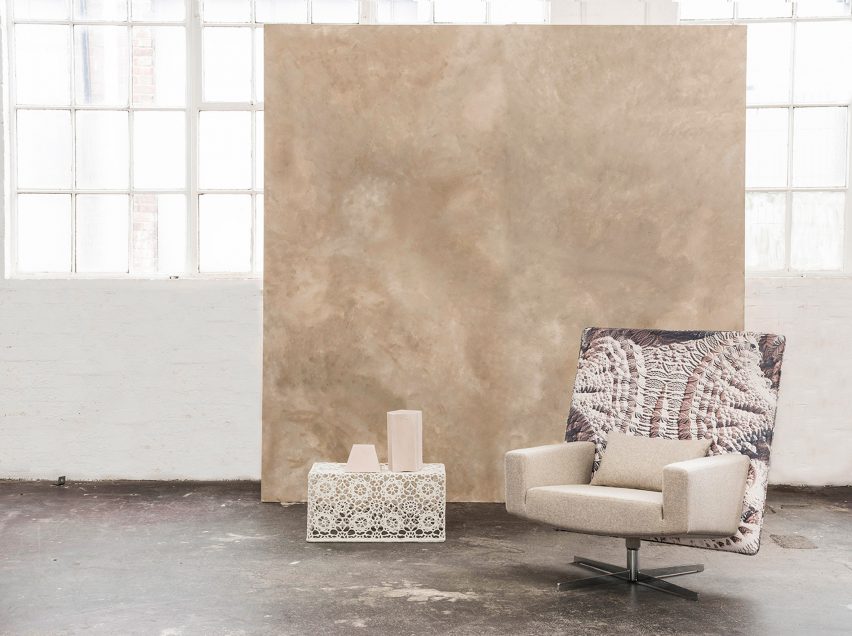
The design that has been printed on Wanders' hides is more than 400 dots per inch (DPI), but the digital file is large enough that a version three times more detailed can be used for future hides.
"The code is basically the genome of the design. If you change one thing, something changes. If you change two things, a mess can break out, and with the colour we can manipulate it a bit more," Wanders explained.
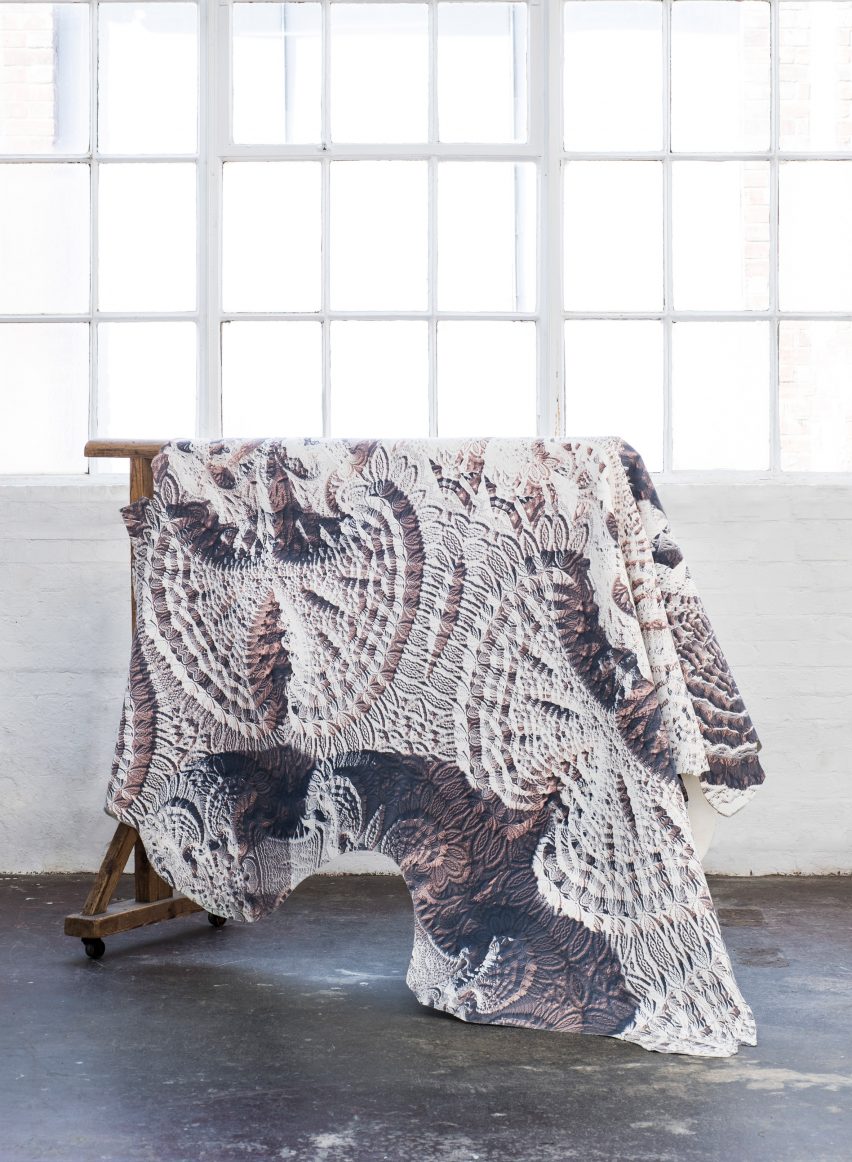
This is the first time that Bill Amberg Studio and Wanders have worked together on a leather hide, and the second iteration of the digitally printed hide project, that Amberg launched at London Design Festival last year.
"We're looking for people who wrap their head around the idea, rather than just thinking, we can knock out a print here," Bill Amberg, founder of his eponymous studio told Dezeen.
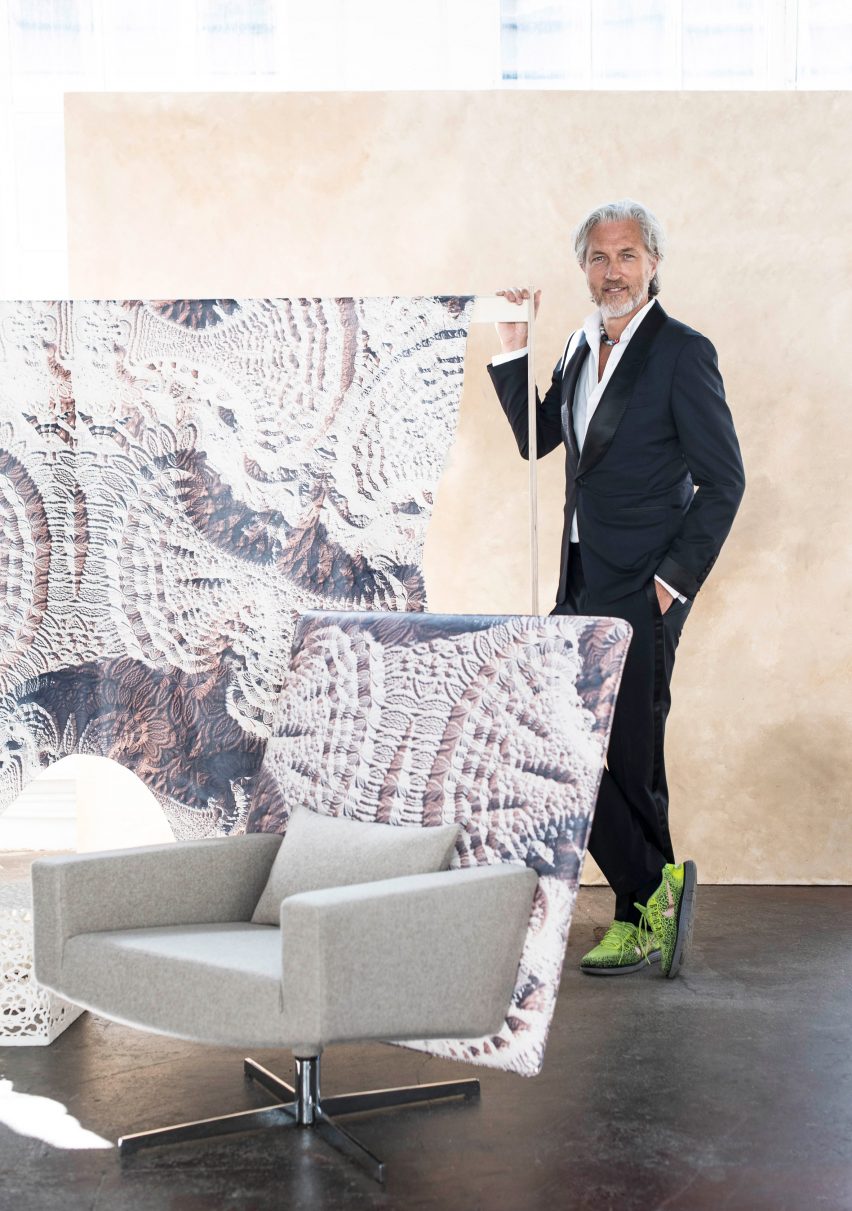
Wanders decided to take part in the project after learning about the possibilities of the digital printing machine, which can reproduce extremely high-definition images with clarity. The printed design doesn't stretch or bleed on the hide, even when the leather is shaped or used for upholstery.
"I got really excited when I heard about the level of quality of printing that you can do," said Wanders.
"It's a way to materialise a print in a different way, a super durable way – in a way that can be used in a very different way to what we would normally do, so you can use it for things that normally you'd never use a print for."

Five other creatives have produced their own unique digitally printed hides for the London design Festival launch.
Jeweller Solange Azagury-Partridge produced a hide that depicts all the colours of the spectrum radiating around a central point. Brooklyn-based Calico Wallpaper's hide is in a variety of grey tones. The studio looked to traditional marbling and dip-dying techniques for their design.
Interior design studio Champalimaud have created a geometric design based on ripples of water, in white, grey, rust and soft orange, whilst textile designer Lisa Miller produced a design of interlinked rectangle boxes. Based on the work of Sonia Delauney, Miller's hide is available in four colourways.
Artist Matthew Day Jackson's design draws on his current preoccupation with the surface of the moon. His collection of curvy tables and chairs for Made by Choice, with a Formica surface based on images of the moon's surface launched at Milan design week earlier this year.